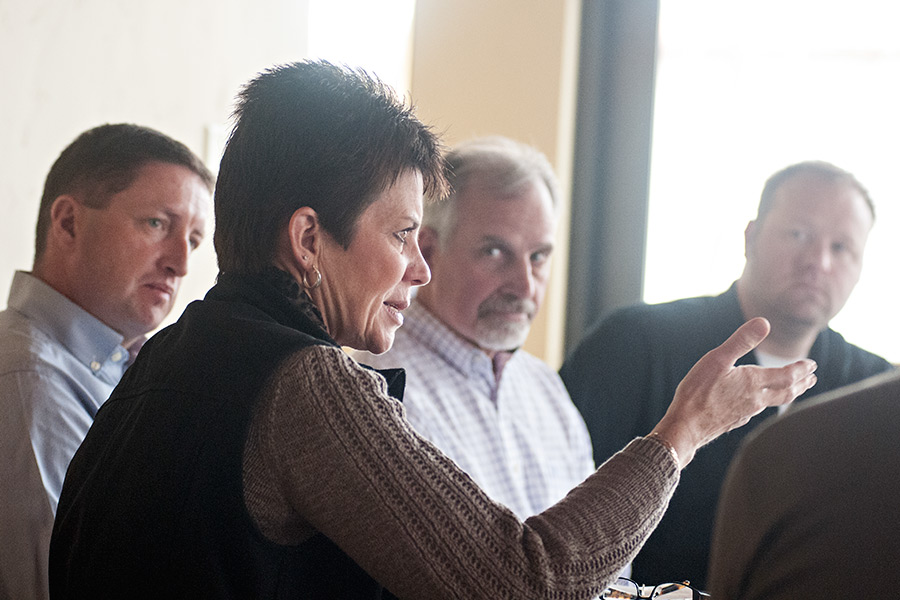LAKESIDE – The Flathead is known for its many agricultural products, such as cherries and winter wheat, and now the valley may be on the forefront of a growing revolution, one with decidedly boozier origins and green potential.
Last week, Ann George, administrator of Hop Growers of America (HGA), visited the Tamarack Brewing Company to discuss the past and future of hops, the bitter, green, conic flowers used for flavoring and stabilizing beer.
George’s message was one of promise for a fledgling agricultural industry in the Flathead: as microbreweries continue to gain a foothold in the beer market, hops are also gaining popularity.
Montana-grown hops are also gaining traction in the larger market, which in the U.S. is largely centered on the Pacific Northwest growing zone. Tom Britz, who grows 43 varietals at his Glacier Hops Ranch, was recently elected to the newly formed Small Grower Council as part of the HGA.
Individual hop farmers now have representation with the association, which Britz said is a step in the right direction toward communication and understanding which hops grow best in different areas of the country.
“The good news is we’re at the table, we’re getting started,” Britz said.
As the U.S. continues to add microbreweries, George said more hops are used in beer compared to years past. The national Brewers Association set a goal of having microbrews comprise 20 percent of the total beer volume in the U.S. by 2020, she said, and already in 2014, microbrews accounted for 11 percent of the market.
Just by having 11 percent of the market, the average hopping ratio per barrel of beer increased from one-fifth or one-fourth of a pound of hops per barrel to 1.46 pounds per barrel.
“That’s six times the amount of hops,” George said.
If the association reaches its goal of 20 percent of the market, George estimated that the amount of hops necessary to make that beer would be equivalent to 35 percent of the U.S. hop crop.
While surely the Australian and European hop markets would be included in that action, George said the increased need for hops brings about opportunities for new farmers like Britz to get into the game.
“It’s exciting to see hop-growing expand back to parts of the country that were previous hop-growing areas,” she said.
Britz’s farm started as an experiment, funded through the Montana Department of Agriculture and two local breweries, including Tamarack, and started as less than 1 acre. Britz now plans to expand to another 30 acres.
It’s because of the support from local brewers that Britz was able to start his farm, and now those hops will go toward making local beer. Tamarack founder Josh Townsley said locally grown hops are an attractive ingredient for his beers, which already include Montana water and barley.
“Any locally sourced agricultural items are a huge benefit to us,” he said. “Montana is a great export state; everybody wants a piece of Montana.”
Townsley, who is also the president of the Montana Brewers Association, said Montana has 53 breweries and will likely have more than 60 by the end of the year.
An integral piece of supporting the small hops industry is breweries contracting certain amounts of hops from growers, thereby allowing the growers to approach the bank for a new loan with money already promised, George said.
It’s also important to know which types of hops grow best in this region. Britz said his farm is on the same 48th latitude as the world-famous hop fields of the Hallertau region of Germany, and the extra light the Flathead receives each summer day relative to the fields in Oregon or Washington could prove to be a boon for the crop.
Still, growing hops is a nascent effort in the valley, one that Britz and George believe will continue to find its way and thrive.
“We’ll skin our knees a little bit,” Britz said. “And we’ll find our sweet spot in time.”
